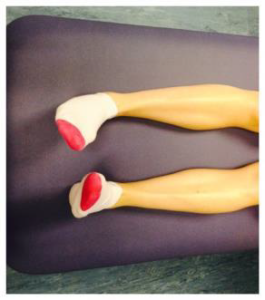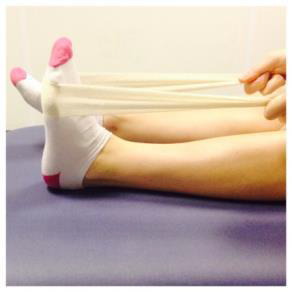Neurodiversity information for parents and young people
About the fracture
A ‘lateral ankle avulsion fracture’ is a small break (fracture) to the ankle bone.
It is caused by a fragment of bone breaking off (avulsion) from the side (lateral) of the ankle where it attaches to tendons or ligaments. It is treated like a sprain.
Recovering
Healing
Healing usually takes around 6 weeks.
Pain and swelling

Your ankle may be swollen and painful. This is normal for 3 to 6 months after your injury.
Swelling is often worse at the end of the day. Resting with your foot up, and using ice or cold packs, will help (see Caring for your injury, below). You can also take pain killers.
![]()
Walking and your boot

The boot protects your ankle and will make you more comfortable. Wear the boot when you are standing and walking for the first 2 weeks. You can put weight through your foot. You may find it easier to use crutches in the early stages.
You can take the boot off at night or when resting.
![]()
Exercises

Start exercise as soon as possible. See below for details.
Stop smoking
![]()
Reducing or stopping smoking will help recovery.
![]()
Follow-up

We do not usually book to see patients again. With this injury, most people recover well by following the instructions we give here.
![]()
- if you are still using the boot after 6 weeks
- if you still have significant pain or swelling after 12 weeks
- if you are concerned about your symptoms
- if you are unable to follow the instructions given below
- if you have pain other than in your ankle.
Caring for your injury
Rest your ankle, especially in the first 3 days. Raise your ankle on a stool or cushions so that it is above the level of your hip. This will help reduce the swelling.
Wear your boot whenever standing and walking for the first 2 weeks. You can take it off when resting and at night. Wear a long sock in your boot.
Use a cold pack to help with pain and swelling. You can use an ice pack or bag of frozen peas wrapped in a damp towel. Put this on your ankle for up to 15 minutes every few hours. Make sure the ice is not in direct contact with your skin.
Exercises
Early movement of the ankle and foot is important to promote blood flow and reduce the risk of a blood clot. You can find out more including symptoms of a clot on the NHS website.
- Do these exercises 3 to 4 times a day.
- Start straight away.
- Take your boot off first.
- Move gently and within comfort. You do not need to push into pain.
1.
- Point your foot up and down.
- Repeat this 10 times.

2.
- With your heels together, move your toes apart to turn the foot outwards.
- Repeat this 10 times.

3.
- Make gentle circles with your foot in one direction and then the other direction.
- Repeat this 10 times.

You can stop using the boot 3 weeks after your injury.
Start by walking without the boot at home. Build up to walking without it outside and for longer walks. You should not be using your boot 6 weeks after the injury.
It is normal to still have mild discomfort and swelling. This may continue for 3 to 6 months.
Activity and exercise
-
Gradually increase your activity.
-
Avoid anything that involves impact for 3 months. This includes running, jumping and dancing.
-
You can now also move on to the next exercises.
-
Do these exercises 3 times a day.
![]()
| Balance, level 1 | |
|---|---|
| These exercises are for people who could not stand on one leg before their injury. | |
1.
|
 |
|
2.
|
|
3.
|
 |
1.
- Sit with your leg straight out in front of you.
- Put a towel or bandage around your foot and pull it towards you.
- Feel a stretch in the back of the calf.
- Hold for 30 seconds.

2.
- Point your toes down as far as they go.
- Put your other foot on top and apply some pressure. This will stretch the top of your foot.
- Hold for 30 seconds.

| Balance, level 2 | |
|---|---|
| These exercises are for people who could stand on one leg before their injury. | |
1.
|
 |
|
2.
|
|
|
3.
|
Frequently asked questions
The boot has a thicker sole which can make you feel uneven. Make sure you wear a supportive shoe or trainer on your uninjured foot. This will reduce stress on other joints.
If you need more advice, contact the Trauma Triage Clinic.
If you have diabetes, contact us to discuss your boot. This is particularly important if you have problems with your skin or sensation. We may provide you with a specialist diabetic boot.
You can return to driving when:
- you are no longer using your boot
- and you can walk comfortably
- and you can perform an emergency stop without pain.
Before you start driving again, it is recommended that you speak to your insurance company and test your ability to drive in a safe environment.
You can get a fitness for work statement from your GP.
Please return both the boot and crutches to the Physiotherapy Department.